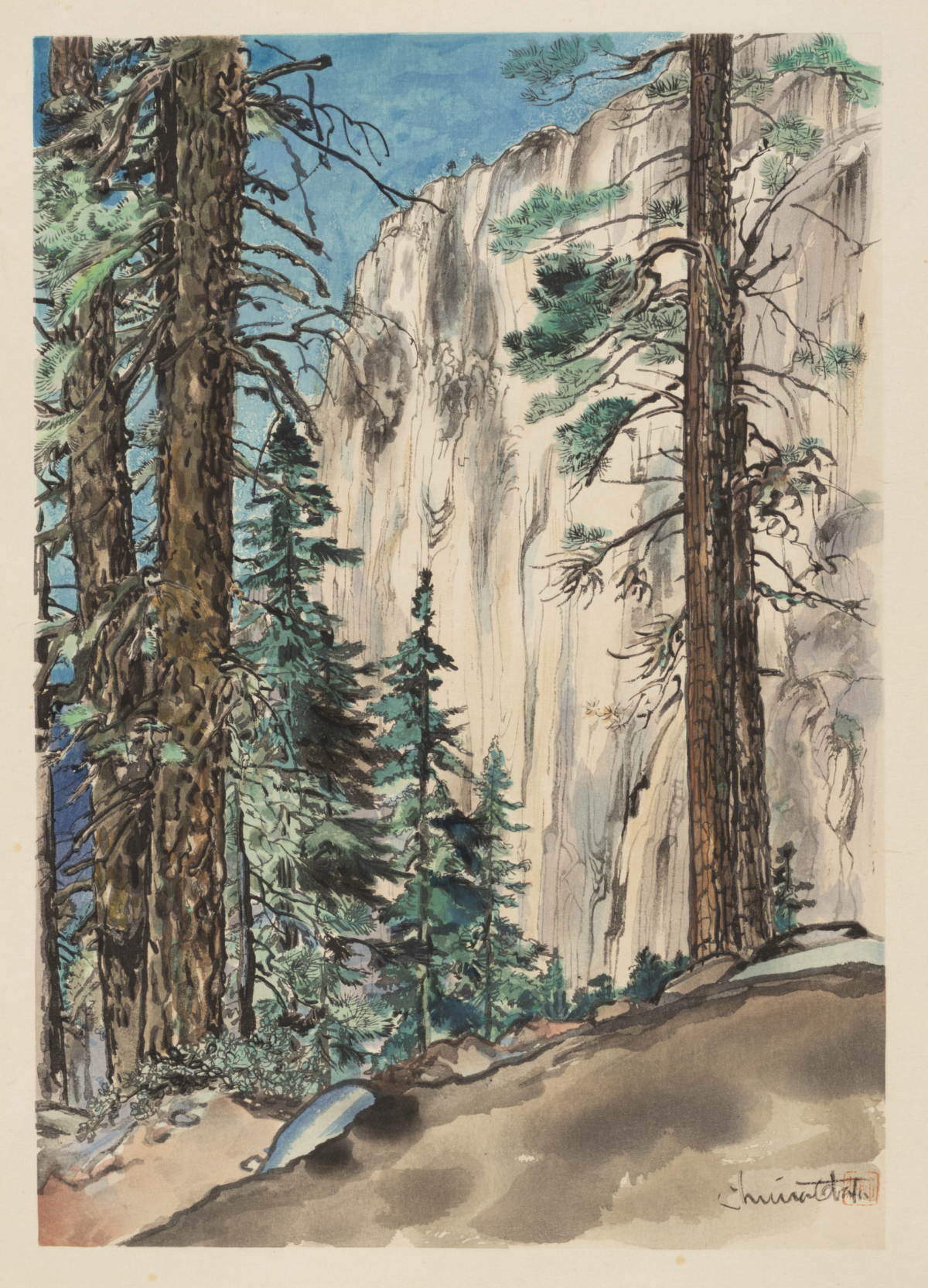
Chiura Obata
Born in Ibara Town, Shigetsu District (now Ibara Town, Ibara City), Okayama Prefecture. Obata’s real name was Zoroku Sato. He started learning Japanese-style painting at the age of seven and moved to Tokyo in 1899 at the age of 14 to study under Tanryo Murata, the painter well-known for the Restoration of the Imperial Rule. He emigrated to the United States in 1903, and in 1912, he married Haruko Kohashi, an Ikebana artist. Already around this time, he had provided illustrations to Japanese-language newspapers in San Francisco and worked for the Japan magazine from 1915 to 1927, which was published by Toyo Kisen Kaisha (Oriental Steamship Company). In 1921, he played a central role in the establishment of the East West Art Society with Teikichi Hikoyama and Matsusaburo George Hibi. A significant turning point in both his artistic and professional career occurred during a trip to Yosemite Valley in 1927. Despite having only completed elementary school in Japan, his artistic abilities brought him a teaching position at the University of California, Berkeley. In 1928, he temporarily returned to Japan due to his father’s sudden death. During his visit, he created a series of 35 woodblock prints of his representative landscapes in America at Takamizawa Woodblock Publishing. During World War II, he was initially interned at the Tanforan Assembly Center, but opened an art class within 25 days of internment. He managed the class even after moving to Topaz. He was released in 1943, well before the end of the war. He then worked for a commercial art company in St. Louis. In 1945, he returned to the University of California and resumed his position. In 1954, he became a naturalized citizen.
- Chiura Obata, "Eagle Peak Trail (Yosemite, California)" :
- 1930, Woodblock on paper, Japanese American National Museum (Gift of Eugene and Yuri Kodani, 99.287.7)
